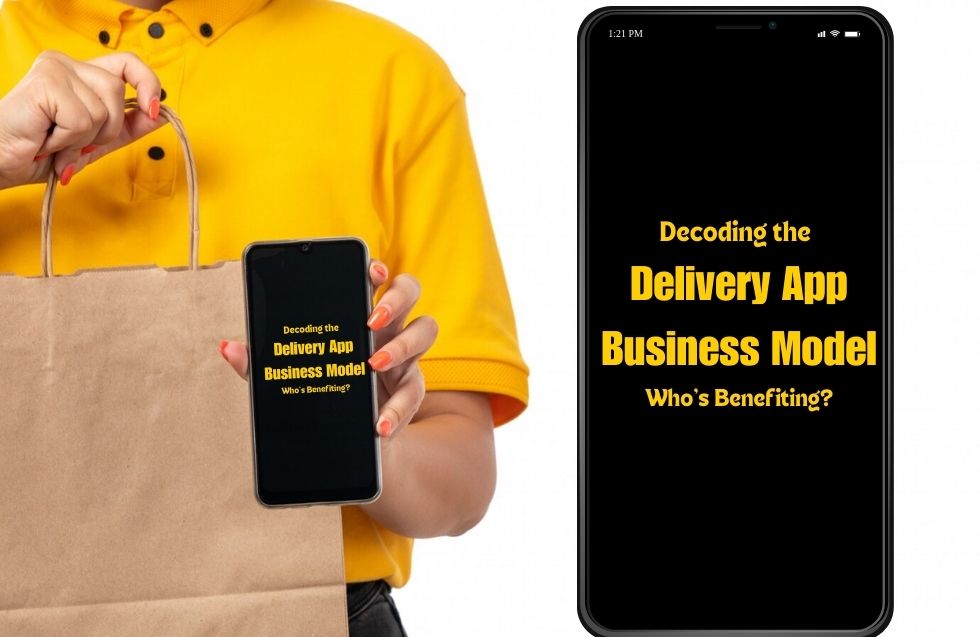In the fast-paced, convenience-driven world we live in, delivery apps have revolutionized the way we access products and services. Whether it’s food, groceries, or even prescription medication, a few taps on a smartphone can get almost anything delivered to your doorstep. But how do these delivery apps operate, and more importantly, who is truly benefiting from this booming business model?
How the Delivery App Business Model Works
At its core, delivery apps operate as middlemen between consumers and vendors. Their main functions include:
- Aggregating Orders: Delivery apps provide a platform where customers can browse menus or catalogs from various restaurants, grocery stores, and retailers.
- Facilitating Transactions: They handle payments and coordinate the logistics of the delivery, either through in-house fleets or third-party couriers.
- Commission-Based Revenue: Typically, delivery apps make money through commissions on each sale, charging a percentage to the restaurants or retailers while also adding a delivery fee for the consumer.
Now, let’s break down who benefits from this business model.
Who Benefits from Delivery Apps?
1. Consumers: Convenience is Key
The most obvious beneficiaries are consumers who value convenience and time-saving solutions. Delivery apps eliminate the need for physical shopping or dining out, allowing users to get what they need from the comfort of their homes. This is especially advantageous for busy professionals, parents, and people living in urban areas where commuting can be time-consuming.
Benefits for Consumers:
- Time-saving: No need to visit stores or restaurants in person.
- Variety: Access to a wide range of restaurants and stores, offering more choices than what’s available nearby.
- Convenience: Quick ordering and delivery, with options for same-day or even within-the-hour service.
2. Businesses: Increased Reach & Sales
Restaurants, grocery stores, and retailers are key stakeholders in this model. By partnering with delivery platforms, businesses can expand their customer base without having to invest in their own delivery infrastructure. This is particularly beneficial for smaller establishments that may not have the resources to run their own delivery services.
Benefits for Businesses:
- Wider Customer Base: Delivery apps allow businesses to reach a broader audience beyond their immediate location.
- Increased Sales: Many restaurants and stores experience a surge in orders when listed on popular apps, as consumers are more likely to order from the convenience of their phones.
- Reduced Overhead: Businesses can offer delivery without the logistical and operational costs of managing a delivery team.
However, it’s important to note that the benefits come with a cost. Restaurants and stores often have to pay hefty commissions to the delivery platforms, which can cut into their profit margins.
3. Delivery Drivers: Gig Economy Opportunities
Delivery apps rely on gig economy workers to complete the last-mile delivery. For many individuals, working as a delivery driver offers flexibility, allowing them to work when they want and earn extra income. Some drivers take it on as a full-time gig, while others use it as a side hustle.
Benefits for Drivers:
- Flexible Hours: Drivers can choose when and how often they want to work, making it ideal for those seeking part-time or flexible employment.
- Income Potential: While earnings vary by region and demand, drivers can make a decent income, especially if they work during peak times.
- Low Barrier to Entry: Most delivery apps don’t require extensive qualifications, making it an accessible option for many individuals looking for work.
However, many drivers also face challenges, such as a lack of benefits, job instability, and fluctuating earnings based on demand and tips.
4. Tech Platforms: The Real Winners?
The biggest beneficiaries of the delivery app model are the tech companies behind the platforms. From Uber Eats to DoorDash and Instacart, these companies have capitalized on the growing demand for delivery services and have built multi-billion-dollar enterprises.
Benefits for Tech Companies:
- Revenue Growth: With commissions, delivery fees, and subscription services like Uber One and DoorDash’s DashPass, tech companies enjoy multiple streams of revenue.
- Data Collection: Delivery apps collect massive amounts of consumer data, including preferences, purchasing behavior, and trends, which they can use to optimize services or sell to third parties.
- Scalability: Delivery apps can scale their operations across cities, states, and even countries with minimal physical infrastructure. This allows them to grow quickly and reach new markets at a low cost.
The Challenges: Who Isn’t Benefiting?
Despite the obvious beneficiaries, not everyone is equally rewarded by the delivery app business model.
- Restaurants: Many small businesses find the commission fees (which can range from 15% to 30%) challenging. These fees can significantly eat into already slim profit margins.
- Drivers: Although gig economy jobs offer flexibility, many drivers face unpredictable income and lack benefits like healthcare, paid time off, or job security.
- Consumers: While the convenience of delivery apps is undeniable, consumers often end up paying a premium. Higher menu prices, service fees, and delivery charges can make the cost of ordering through apps much higher than dining in or picking up food in person.
The Future of Delivery Apps
The delivery app business model is here to stay, but it is also evolving. New trends such as ghost kitchens, where food is prepared solely for delivery, and automated delivery, using robots and drones, are reshaping the landscape. As technology advances and consumer expectations rise, delivery apps will continue to find innovative ways to grow while addressing challenges around profitability and sustainability.
Conclusion: A Win-Win-Win Model?
Delivery apps have created a complex ecosystem where consumers, businesses, and tech companies all benefit in different ways. While the model brings convenience and new opportunities, it also highlights the challenges of balancing profitability for all stakeholders involved. As the industry evolves, addressing the needs of both small businesses and gig economy workers will be key to its sustainability.
Ultimately, the delivery app business model is a win for many—but not all. As consumers continue to demand convenience and technology advances, we’ll see how this business model adapts to meet the evolving needs of all parties involved.












